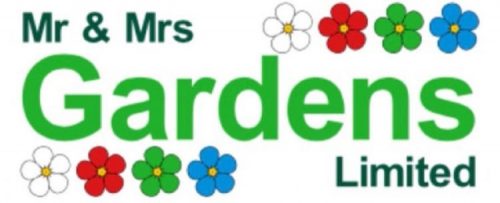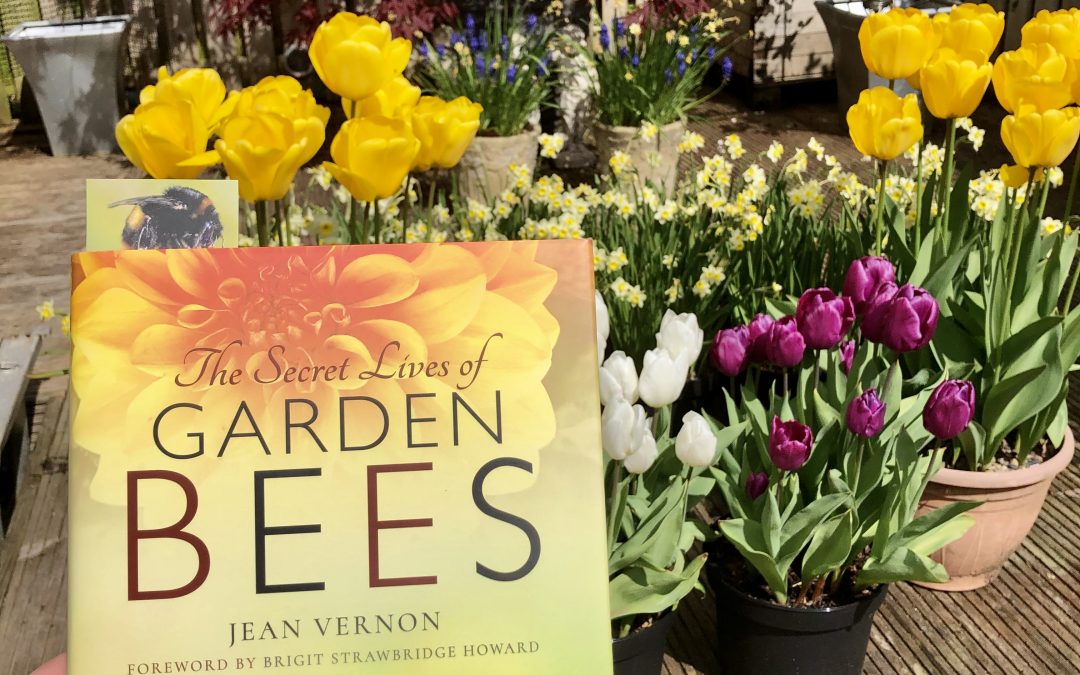I first discovered the author, Jean Vernon, aka ‘Jeanie Bee’, aka @TheGreenJeanie, on social media (Twitter). I love gardening, gardens, plants, birds, insects, the outdoors and nature, and I enjoy connecting with others who share these interests. Anyone who follows Jean on Twitter will know she is passionate about plants, bees, nature, photography and writing. It must have been around January 2020 when I noticed a tweet from Jean saying she had a book coming out soon called, ‘The Secret Lives of Garden Bees’, and it was available to pre-order. I pre-ordered, and purchased a signed copy of the first edition.
When I received the book my initial impression was how beautiful it was. It’s the kind of book you really want to look at and admire. I think, for me, the word that fits really well to describe the book is ‘spellbinding’ – i.e. it held my attention completely, as if by magic. The photography is simply first class. Almost every double page features a stunning photograph of what is being described within the text. Bees and flowers go so well together, and you will realise this book captures this perfect partnership before you have even read a single page.
The book begins with a look at Jean’s bee journey. From the Foreword by Brigit Strawbridge Howard (@B_Strawbridge – renowned wildlife gardener, nature lover, author, speaker and bee advocate), to Jean’s own reflections on her first childhood encounters with the bees in her family garden, you will quickly realise this book is written from the heart as well as the head. Jean doesn’t just study bees, she loves bees, and this makes for a very readable book for anyone who wants to find out about bees and their fascinating life in our gardens and green spaces.



The book is set out in eight chapters, together with very helpful further reading references for those who want to delve even deeper into the fascinating life of garden bees.
Chapter 1, The Bees, immediately from the introductory paragraph is sure to capture your interest. It is presented in a way that makes bee life sound like a crime story, murder mystery, soap opera, and a youth culture film script all rolled into one. Once you get further into the book you will come to realise this isn’t too far from the truth. This chapter is also where you will get a feel for the author’s wonderful sense of humour, and her talent for making plant and bee life sound fascinating for those who perhaps didn’t realise just how fascinating it really is.
Chapter 2, Meet The Bees, reminded me of a visit to a large public garden with my children many years ago. My wife and I were keen to ensure our children would be comfortable with the bees that were buzzing around the flowers in the rows of herbaceous borders. We gave the bees different names to match their appearance, such as Fuzzy Wuzzy, Yellow Belly and White Bum. We had fun trying to spot the different bees and naming them, which made the buzzy bee experience more of a game. To this day we laugh when we recall our two children running towards us on the grass between two flower borders shouting very loudly, ‘I’ve seen a white bum! I’ve seen a white bum!’, much to the amusement of the other visitors nearby. After reading this chapter you may still call the bees, Fuzzy Wuzzy, Yellow Belly, or even White Bum, but at least you will also know the real common names for the many species of bees you will spot in the garden, and even the Latin names if you so desired. This chapter also very helpfully sets out how to identify the more common bee species (colouring, size, body shape), how to spot each particular species (behaviour, habitat), and how to help that species (types of flowers to grow). You will learn there are more types of bees than you thought there were. Some varieties you will spot regularly, and others you may never see unless you are very observant and very lucky. You are definitely going to want to do some bee spotting and take photos of bees on flowers once you have finished reading this chapter.
Chapter 3, Bee Behaviour, is going to blow your mind. You will learn so much about bees in this chapter, I certainly did. You will learn things you never knew about stings, why bees buzz, the power of scent, perfume and ultra-violet light, bee harmony and bee love. While reading this chapter I found myself stopping to chat with family members with me saying, ‘Did you know… [insert fascinating bee fact here]? Mind blown. You’ll do the same, I’m sure of it.
Chapter 4, Bee Food, reveals what bees need to survive, how they feed, and why different bees need different plants. You will learn about pollen, nectar, and electrically charged bees and flowers. You will also read about robbing bees, busy bees and lazy bees.




Chapter 5, The Hostile Garden, is a bee horror story. This is the stuff of bee nightmares. If you are a bit squeamish you may be tempted to skip this chapter, but please don’t. Don’t worry, Jean doesn’t go into the gory details. Yes, you will learn about some bee predators, but Jean also reminds us that this is the circle of life in the garden. All insect and plant life, and our lives, are interwoven even if at times we are so busy we don’t realise it. This chapter reminds us how fragile bee life is, and also what bees are up against to keep their lifecycle going.
Chapter 6, Plant Intelligence, illustrates just how much knowledge the author has about the environment bees live in within our gardens and green spaces. Jean’s background in botany really shines through here, as does her ability to make reading about plant life really interesting. Also, get ready for some humorous analogies in this chapter. You’ll read about sex dolls, traffic wardens, road blocks, booby traps, poisoned chalices, anti-social behaviour orders, pubs, and substance abuse. Yep, it all features in the fascinating life of bees in our gardens and green spaces, and illustrates just how clever bees and plants are.
Chapter 7, Bee-good Plants, is all about selecting and learning about plants that are beneficial for bees. The author does not provide the reader with a great big alphabetical list of plants with no explanation. Instead she encourages the reader to look at these widely available lists, but also to think about where they buy their plants from and how to grow them. There are tips on those particular plants that certain bee species really love, and also some herbs that are great for growing in the garden, great for us, and great for the bees too.
Chapter 8, Season by Season in the Bee Garden, is a wonderful insight into the life-cycle of bees. This chapter looks at the timing of nature, and how we can help give bees and nature an extra bit of help in our gardens. This is a great chapter to put into practice. I know I will certainly be changing some of my own gardening habits and introducing new ones to help welcome and sustain the bees. I’m looking forward to making bee friendly habitats, bee houses, bee bars, and looking out for bee ‘Boy Bands’ buzzing a tune in the garden.
At the end of this wonderful book the author sets out a ‘Further Reading’ list, ways to ‘Get Involved’ in bee projects, and all the references used throughout the book. There is everything here to satisfy someone’s thirst for more bee learning.
Jean’s love, fascination, curiosity and knowledge of bees and plants, and the ability to share this with others in a friendly and chatty manner comes across on every page of this book, as does her sense of humour. I have no doubt people will enjoy this book, and learn from it. I would have no hesitation in recommending it.
Michael
Mr & Mrs Gardens Limited
* All the photographs on this blog have been taken by us and are owned by Mr & Mrs Gardens Limited. They are not photographs from the book.


